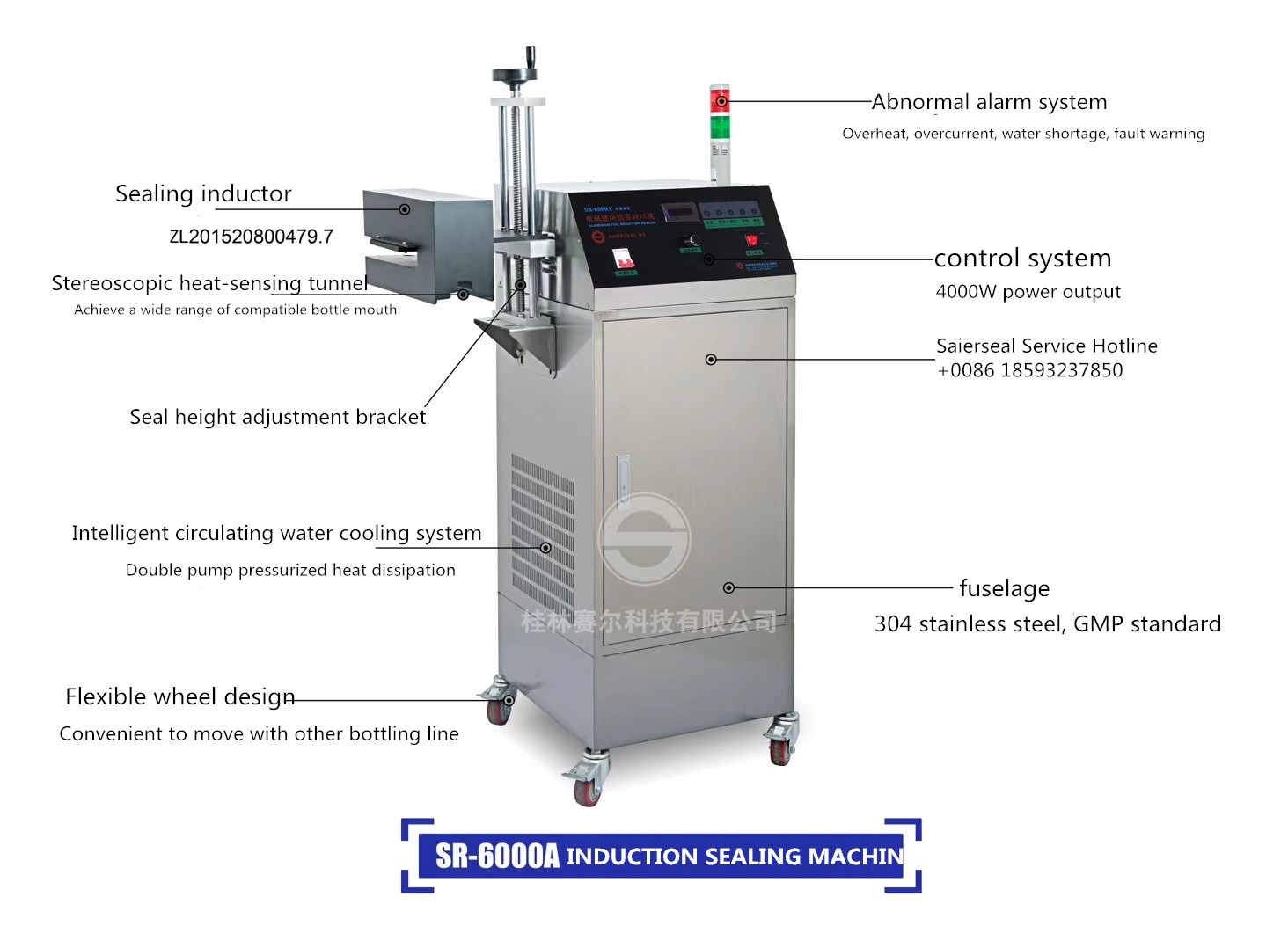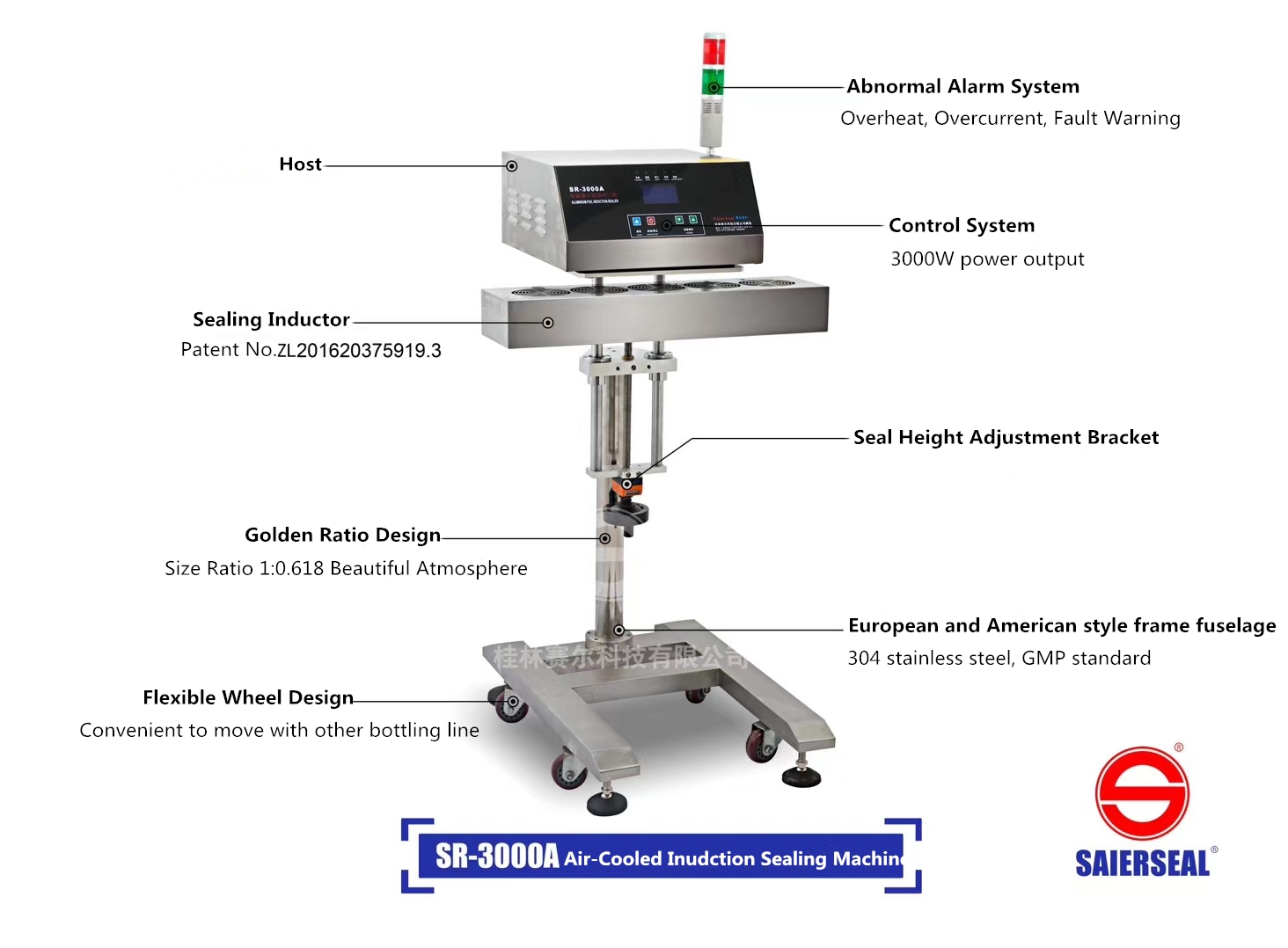News Center
Induction Sealing Machine: The Buying Guide in 2022
AddTime: 2022-10-12 15:02:17Hits: 1675
Induction Sealing Machine: The Buying Guide in 2022
Do you know induction sealing has created an airtight seal that prevents your products from leaking at the closure? An airtight seal will also protect your products from exposure to air and ensure your product's freshness. Hearing so many benefits of this induction sealing, do you want to have a try? Today I will guide you through every aspect of this induction sealing machine, from benefits, application, classification, working principle and FAQ about this machinery. Let's drive to the subject of the topic directly.1. What is Induction Sealing?
Generally speaking, induction sealing involves bonding thermoplastic materials by applying induction heating. Induction sealing is a process that involves the sealing of a capped bottle. It involves the creation of hermetic sealing on a bottle after it has been filled and capped by filling and capping machines. It involves the application of eddy currents.

2. What is Induction Sealing Machine?
An induction sealing machine is a machine that is used for the sealing of non-metallic containers (maybe plastic or glass containers) by the application of the technique of induction heating. The induction sealing machine has many uses, but its most common application is in cap sealing. An electrical field is created by the sealing head of the induction sealing machine heating up the foil liner on the inside of the cap. The hot foil causes the melting of the polymer coating present on the inner seal. Coupling the heat with the pressure generated by the cap leads to forming an airtight seal.
3. What are the Advantages of Induction Sealing Machine?

- They have vast applications in various industries like pharmaceutical, food and dairy, beverage, etc.
- They provide fast and continuous sealing of the containers
- They are available in different forms and can be customized according to the needs.
- Most of them are user-friendly and easy to install.
- They can be applied for small to very large operations.
4. How does Induction Sealing Machine Work?
Nevertheless, the sealing process varies between cap induction and direct induction sealing.- 1- For cap sealing, caps are required with also aluminium liner.
- 2- The bottles are then closed and transmitted to the sealing head by the conveyor. An electrical field is created by the induction sealing machine`s sealing head, heating the foil liner on the same side of the cap.
- 3- The hot foil has to melt the polymer coating on the inner seal. It results in better sealing.
- 4- Unlike other kinds of induction sealing, capless induction sealing applies an airtight seal directly to the container.
- 5- This type of induction sealing does not require the usual requirement of a screw thread or a cap.
- 6- In contrast to conventional induction sealing, this form of induction sealing is somehow more complicated. First of all, the foil is placed in a reel.
- 7- After the foil has been placed, it is pressed by the sealing head, initiating the induction sealing process that terminates by adhering the seal to the container.
5. What Factors will Affect the Induction Sealing Efficiency?
To understand a steady item seal these defined items need to match well.- Bottles
- Cap conclusion
- Lining material
- Machine Type
6. How to Choose the Most Suitable Induction Sealing Machine?








